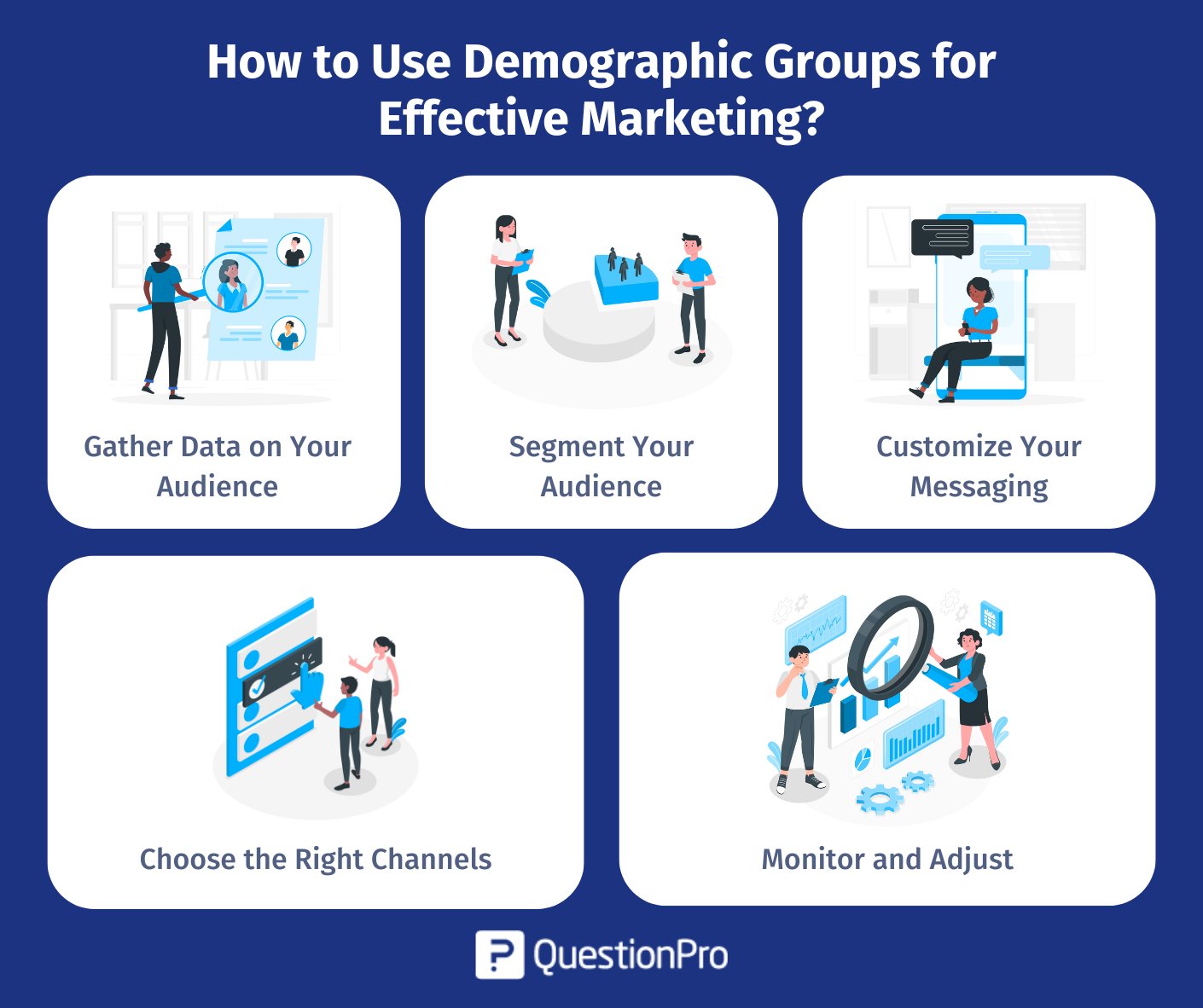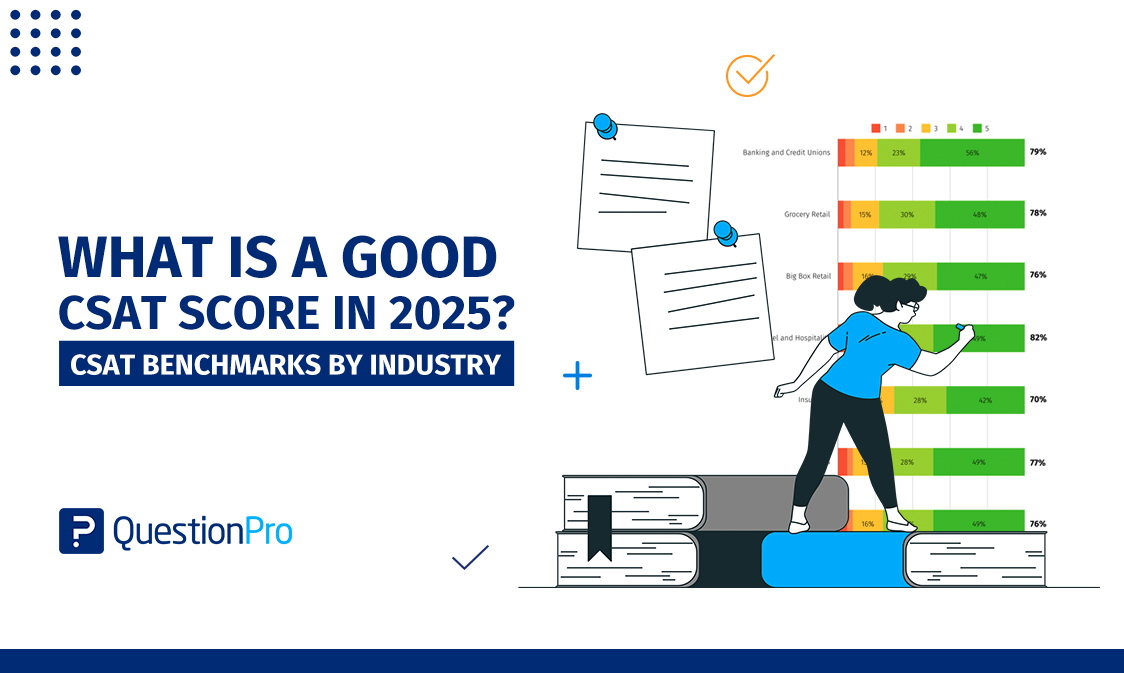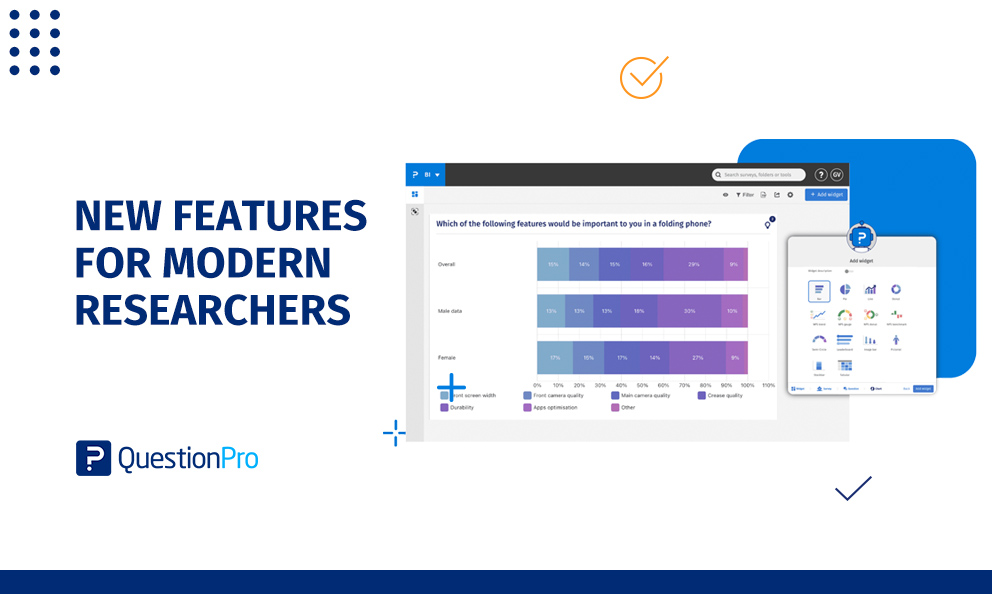
Understanding your audience is essential for making meaningful connections! One of the best ways to truly engage with your customers is by breaking them down into different demographic groups.
These groups are created based on shared characteristics such as age, gender, income, and location, and they can really influence how businesses market their products. Viewing your audience through the lens of demographics opens up opportunities to customize your strategies to the people who matter the most.
In this post, we’ll explore why demographic groups are so important and how you can use this valuable insight to elevate your marketing efforts!
What are Demographic Groups?
Demographic groups are the different categories or segments of people that share common characteristics. Researchers and businesses use these groups to understand population density and make informed decisions. These groups are usually based on:
- Age
- Gender
- Income
- Education
- Race and
- Geographic location
Learn More: Demographic analysis, its importance, and the methods that can be used.
Why Do Demographic Groups Matter in Business?
Understanding demographic analysis is crucial for any business that wants to succeed. Here’s why demographic groups are important in business:
1. Targeting the Right Audience
One of the main reasons businesses care about demographic groups is that they help with targeting. Not all products or services are designed for everyone, and attempting to appeal to all can waste time and money. When businesses understand the specific characteristics of their customers, such as age, income, gender, and location, they can create more focused marketing campaigns.
By understanding these groups, businesses can develop products, services, and marketing messages that resonate directly with the people who are most likely to purchase from them.
2. Meeting Specific Needs and Desires
Demographic groups allow businesses to understand the needs and preferences of different population segments. When companies have insight into these preferences, they can customize their offerings to meet the demands of their target audience. This leads to better customer satisfaction and loyalty.
3. Improving Marketing Strategies
Marketing isn’t a one-size-fits-all approach. Demographic data helps businesses create personalized marketing strategies that resonate with their audience. Businesses are more likely to engage with their customers and boost conversions by customizing their approach based on demographic groups.
4. Anticipating Market Trends
As demographics change over time, so do consumer preferences and market demands. Understanding demographic changes can help businesses predict future trends.
For example, as the population ages, there may be more demand for healthcare products or retirement planning services. As younger generations focus more on the environment, businesses may need to switch to sustainable products or eco-friendly practices.
By analyzing demographic trends, businesses can stay ahead of the curve and adjust their strategies to meet future demands.
5. Optimizing Product Development
Businesses can design products for those groups when they understand the different demographic groups they serve. Understanding who you’re planning for helps companies to create products that are not only useful but also desirable to the right people.
6. Building Stronger Customer Relationships
Knowing your customers’ demographics can also help businesses build stronger, longer-lasting relationships with their customers. When businesses customize their communications and products to specific groups, customers feel understood and valued. This creates trust and encourages repeat business.
7. Pricing and Sales Strategies
Demographics also play a role in setting the right price for products. People in different income brackets are willing to pay different prices for the same product. By analyzing demographic data, businesses can adjust their pricing strategies accordingly.
The Different Types of Demographic Groups
Demographic categories are simply categories of people who share certain characteristics. These characteristics can be things like age, gender, income, education, and location. By looking at these groups’ businesses, researchers and even governments can understand different behaviors, needs, and preferences.
Here’s a breakdown of some of the main types of demographic groups:
1. Age-Based Demographic Groups
One of the most common ways to classify people is by their age. Different age groups often have other interests, needs, and spending habits. Here are some common age-based groups:
- Children (0-12 years): Products like toys, education, and entertainment are targeted to this group.
- Teens (13-19 years): Teens are known for being tech-savvy, fashion-conscious, and interested in pop culture.
- Young Adults (20-35 years): This group often starts careers, builds families, and explores new technologies.
- Middle-Aged Adults (36-55 years): This group tends to have more disposable income and is often focused on stability, family, and health.
- Older Adults (55+ years): People in this group may be planning for retirement, focusing on health, and interested in leisure activities.
Understanding the needs of each age group helps businesses customize their products and marketing.
2. Gender-Based Demographic Groups
Gender refers to whether a person identifies as male, female, or non-binary, and this can play a role in their preferences and behavior. Businesses often create products or marketing strategies based on gender differences. For example,
- Women: Companies might market beauty products, clothing, or health services that cater specifically to women.
- Men: Sports gear, tools, and grooming products might target male consumers.
- Non-binary and Gender-Fluid People: Some businesses are now focusing on inclusivity, creating gender-neutral products or marketing campaigns that appeal to all genders.
Gender-based groups are important because they can influence how people shop, what they like, and even how they respond to advertising.
3. Income and Socioeconomic Status Groups
People are also grouped by their income level, which can affect their purchasing power and lifestyle. Generally, there are three major income groups:
- Low-Income Groups: People in this group often seek affordable products and prioritize basic needs.
- Middle-Income Groups: This group may have more disposable income and will spend on both necessities and luxuries.
- High-Income Groups: Those with higher incomes often buy luxury goods, invest in high-end services, and have more purchasing power.
By understanding these income-based groups, businesses can price products effectively and market them to the right audience.
4. Education-Based Demographic Groups
Education level is another important factor that can impact how people make decisions, especially when it comes to buying products or services. Generally, people are divided into:
- No Formal Education: People without formal education may prioritize practical and affordable products.
- High School Graduates: This group might have a more limited understanding of some products, but can be interested in practical solutions.
- College Graduates: People with higher education may look for more specialized, high-quality, or innovative products.
- Postgraduate Degree Holders: Those with advanced degrees might be interested in products that offer deep value, technical advancements, or are customized to a particular profession or lifestyle.
Education can influence how people engage with technology and media and even how much they’re willing to spend on certain products.
5. Racial and Ethnic Groups
People are often grouped by ethnicity and race, and these affect cultural practices, traditions, and preferences. Ethnic and racial backgrounds influence everything from food to entertainment, fashion, and even political opinions.
6. Geographic Demographic Groups
Where people live can have a big impact on their lifestyles and needs. This type of demographic grouping is based on geographic location, such as:
- Urban vs. Rural: People in cities may have access to more products, services, and entertainment options, while those in rural areas might focus more on practicality and affordability.
- Regional Demographics: People in different parts of the world or country may have different preferences due to cultural, weather, or lifestyle differences.
- Local Demographics: Within cities, different neighborhoods may have different characteristics, such as wealth, age, or cultural background.
Knowing where your target demographic lives helps businesses decide where to advertise, where to open new stores, or even what kind of products to offer.
7. Family Structure and Marital Status
People also belong to demographic groups based on their family structure or marital status. This affects what products they need or want. For example:
- Single People
- Married Couples
- Families with Children
- Empty Nesters and Retirees
Learn More: What are Demographic Examples?
How to Use Demographic Groups for Effective Marketing?
So, how can businesses use demographic insight to create a marketing strategy that works? Here are a few steps to follow:

1. Gather Data on Your Audience
To start, businesses need to gather data on their customers’ demographics. This can be done through surveys, customer databases, or even by analyzing social media profiles. The more data you can collect, the better you can understand your audience.
For example, you could gather information on their age, gender, location, interests, income level, and buying habits. This helps you create a clearer picture of who your customers are and what they want.
2. Segment Your Audience
Once you have the data, the next step is to segment your audience into different groups based on shared characteristics. For example, you might have segments for teenagers, young adults, middle-aged adults, and seniors. You could also segment by income level or location, depending on your product and market.
Segmenting your audience allows you to create personalized messages that will resonate with each group. A message targeted at young adults might focus on fun and excitement, while a message for seniors might highlight comfort and reliability.
3. Customize Your Messaging
After segmenting your audience, it’s time to personalize your messaging. This means creating marketing content that speaks directly to the needs, desires, and pain points of each demographic group.
For example, if you’re marketing a new tech product, you might highlight its innovation and cutting-edge features to younger customers while focusing on its user-friendly design and convenience for older customers.
4. Choose the Right Channels
Not all demographic groups use the same communication channels. Younger people might spend more time on social media platforms like Instagram and TikTok, while older generations may prefer email or traditional media like TV and radio.
By understanding where your target demographic spends their time, you can choose the right channels to communicate with them. This ensures your message reaches them where they’re most likely to engage.
5. Monitor and Adjust
Once your marketing campaign is up and running, it’s important to monitor how different demographic groups respond. Are younger customers engaging more with your social media posts? Are older customers responding better to email newsletters?
By tracking these responses, you can adjust your strategy to improve your results. For example, if you find a specific demographic isn’t responding as well, you might need to tweak your messaging, change the advertising platform, or even reconsider the product features.
Learn More: Business demographics survey questions + sample questionnaire template
Challenges in Analyzing and Addressing Demographic Groups
Several challenges can make this process more complicated. Understanding these challenges is essential because it helps businesses and organizations navigate them better. Let’s look at some of these challenges:
1. Overgeneralization and Stereotyping
One of the biggest challenges in segmenting demographic groups is overgeneralization or stereotyping. When we group people based on age, gender, or race, it’s easy to assume everyone has the same characteristics, needs, or behaviors.
2. Changing Demographics
Demographics change, and staying up to date with these changes can be a challenge. People move, migrate, and evolve; what was confirmed a few years ago may be outdated.
For example, the traditional definition of “family” is changing; more people are choosing to remain single or delay marriage. These changes in society make it harder for businesses to predict trends or define target markets.
If businesses don’t keep up with these changes, they might miss out on emerging opportunities or fail to address the changing needs of their audience.
3. Data Privacy and Ethical Concerns
Data privacy becomes a significant issue as businesses and researchers gather data on different demographic groups. People may not be comfortable with companies knowing too much about them or using their data without clear consent.
4. Complexity of Multidimensional Demographics
Demographic groups are not always easy to categorize. A person may belong to multiple groups at once. Addressing all these factors simultaneously can create a more complicated picture than focusing on just one demographic characteristic.
This complexity can make it hard for businesses to identify which factors are most important in influencing behavior. Sometimes, a combination of these factors will be the key to reaching a particular group rather than looking at just one factor like age or income.
5. Bias in Data Collection
Another challenge is the way data is collected. If certain groups are underrepresented or overlooked in surveys, polls, or studies, the findings might not reflect the diversity of the population.
Bias in data collection can lead to skewed results, which can impact decision-making. Businesses might develop products or marketing strategies based on inaccurate or incomplete information.
6. Diverse Needs Within Groups
Even within a single demographic group, the needs and preferences of individuals can vary widely.
This is why businesses often need to go beyond just basic demographics and look into more detailed customer segmentation, like:
- Psychographics (lifestyle, values, and interests) or
- Behavioral data (buying habits, loyalty)
It’s important to recognize that people in the same demographic group may still have unique preferences and behaviors.
7. Access to Data
Businesses and researchers need access to good data to analyze and address demographic groups. Unfortunately, getting high-quality, up-to-date data can be expensive or time-consuming. Sometimes, businesses rely on public data, which may not be as accurate or current as needed. Without good data, making informed decisions becomes a challenge.
8. Cultural Sensitivity
When targeting different groups, businesses should be culturally aware. A message, product, or service that appeals to one group might offend or exclude another.
Learn More: Top Demographic Survey Questions for Questionnaire.
How QuestionPro help in addressing Demographic Groups?
QuestionPro is a valuable tool that makes the process easier and more effective. QuestionPro is an online survey platform that helps users gather, analyze, and act on demographic information.
By using QuestionPro, businesses can better understand their target audience and make informed decisions based on solid data. Here’s how QuestionPro helps in addressing demographic groups:
Customizable Surveys for Demographic Data
One of the key ways QuestionPro helps is by allowing businesses and researchers to create custom surveys that specifically target demographic data. With QuestionPro, you can ask respondents about their age, gender, income, education, location, and other important factors that define different demographic groups.
These surveys can be designed to capture detailed information about your customers, which can then be used to segment your audience into more manageable groups.
Segmentation and Targeting
Once you collect demographic data, QuestionPro makes segmenting your audience based on shared characteristics easy.
For example, you can segment your survey respondents into different age groups, income brackets, or geographic locations. This helps businesses understand which demographic groups are most interested in their products or services.
With this segmentation, you can customize marketing strategies or product offerings to different groups more effectively.
Targeted Surveys for Specific Groups
If you want to get feedback from a specific demographic group, QuestionPro has targeted surveys that can be sent to the right audience.
For example, if you want feedback only from high-income professionals, you can set filters to target that specific group. This ensures you are getting insights from the people who matter most to your business.
By targeting specific demographic groups, businesses can get more accurate and relevant data that will directly impact their strategy.
Enhanced Customer Experience
Understanding the needs and preferences of different demographic groups allows businesses to improve their customer experience. With QuestionPro, you can create a more personalized customer experience, which leads to higher satisfaction and loyalty.
Diverse Response Collection
QuestionPro also ensures that you collect responses from a diverse range of people. The platform can be used to reach respondents from different backgrounds, locations and demographic profiles, which ensures you are getting a broad and inclusive perspective.
This is particularly important when researching larger, more diverse markets or launching products globally.
Conclusion
We have learned how demographic insights help businesses target the right customers, create relevant products, and optimize their marketing budget for maximum impact.
We have seen how important demographic groups are in creating effective marketing strategies. By understanding the different characteristics that define each group, such as age, gender, income, education, and location, businesses can create custom campaigns that speak directly to their audience.
QuestionPro is a powerful tool that makes it easier to target the right groups, collect useful insights, and make informed decisions. By using this platform, businesses can ensure they are addressing the unique needs of each demographic group. So, contact QuestionPro today!
Frequently Asked Questions (FAQs)
Answer: Demographic groups help businesses target the right audience, meet specific needs, improve marketing strategies, anticipate market trends, and optimize product development
Answer: Demographic groups can be based on various factors, such as:
1. Age
2. Gender
3. Income
4. Education
5. Location
6. Family structure
7. Etc.
Answer: Businesses can gather demographic data through surveys or customer databases, segment their audience into specific groups, customize their messaging, and choose the right communication channels based on the characteristics of each group.
Answer: Challenges include overgeneralization or stereotyping, keeping up with changing demographics, data privacy issues, complexity in understanding multidimensional groups, biases in data collection, and cultural sensitivity.
Answer: Yes, QuestionPro allows businesses to filter and target specific demographic groups with tailored surveys, ensuring feedback comes from the most relevant audience for their product or service.






